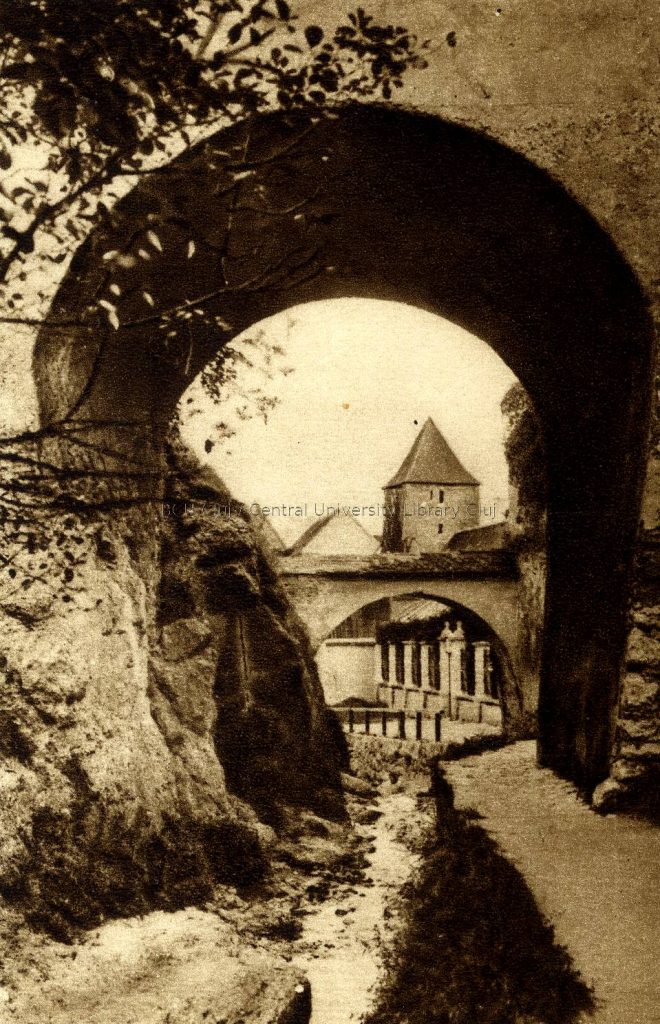Graft Bastion – postcard from Brasov 1957

The Graft Bastion is part of the defense system of the Brasov Fortress. Legend has it that the fortification of Brasov was decided by King Sigismund of Luxembourg in 1395, after a military campaign against the Turks. It seems that the first wall belt of the fortress of Brasov was completed at the beginning of the 15th century, but, as the Ottoman sieges will prove, the fortifications had to be improved and so the construction site continued, for repairs or new constructions, until the first half of the seventeenth century. The efficiency of the defense system is demonstrated by the fact that from the Turkish invasion in 1421, until the entry of Austrian troops in the city, in 1688, Brasov was no longer conquered. It currently houses a section of the Brasov County Museum of History.
The Graft Bastion built between 1515 and 1521, defended and maintained by the guild of saddlers, made the connection between the White Tower and the city’s defense enclosures, which gave it the name of the Gate Bastion. In the 16th century, the eight-tower defense wall was built, and the Graft canal (the word derived from the German gracht, meaning side canal) was dug to drain the runoff from the slopes of Warthe Hill. Following the floods of 1809, the fortified foundations were weakened and the walls were supported by supporting arches by the city’s architects. Between 2003 and 2004, the bastion was renovated and opened to the public, entering the tourist circuit. It currently houses a section of the Brasov County Museum of History.

